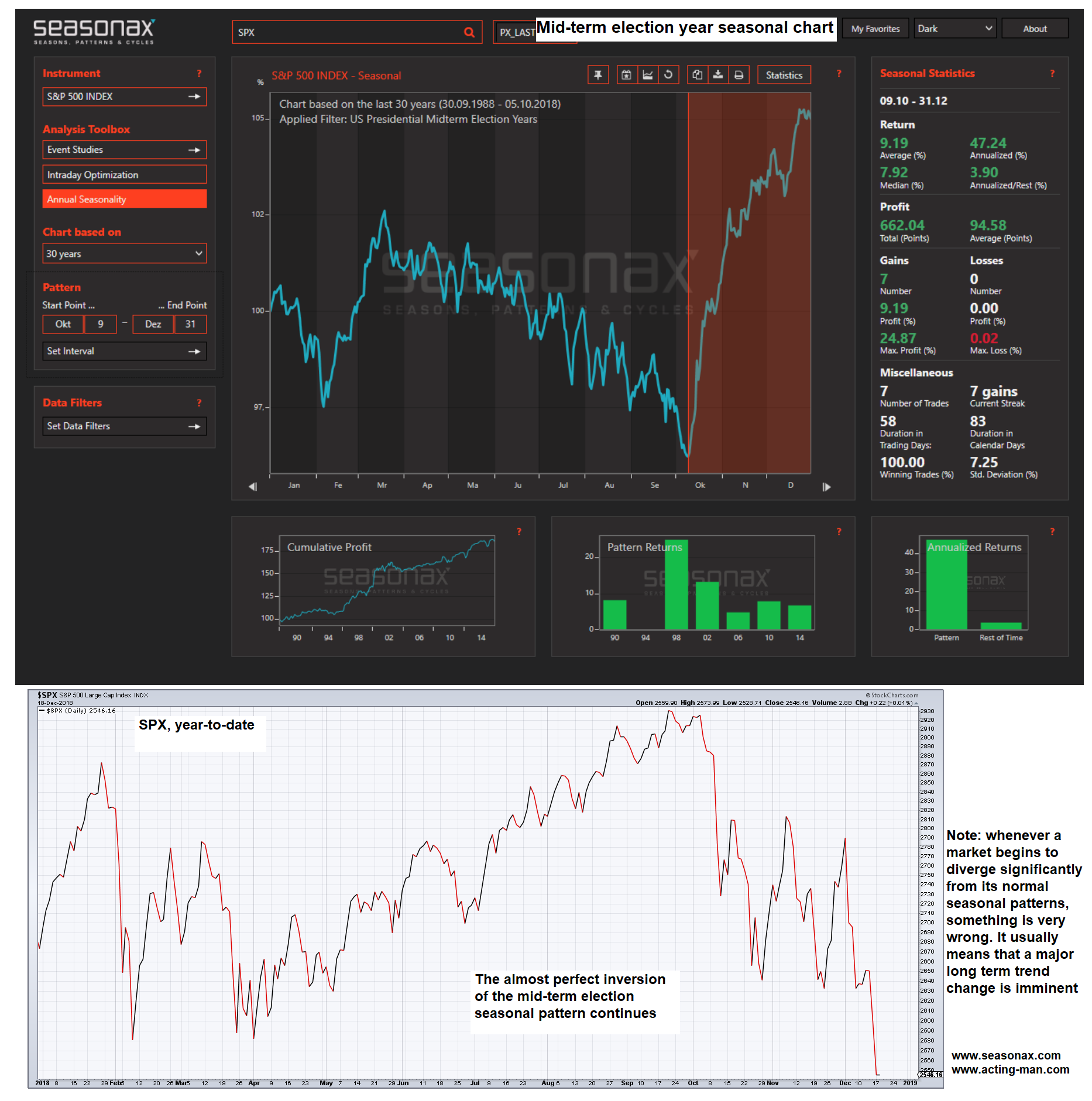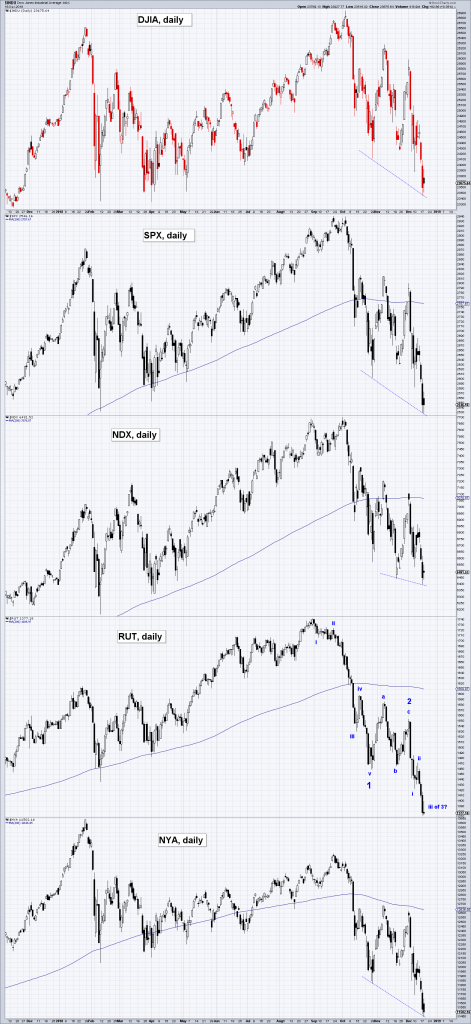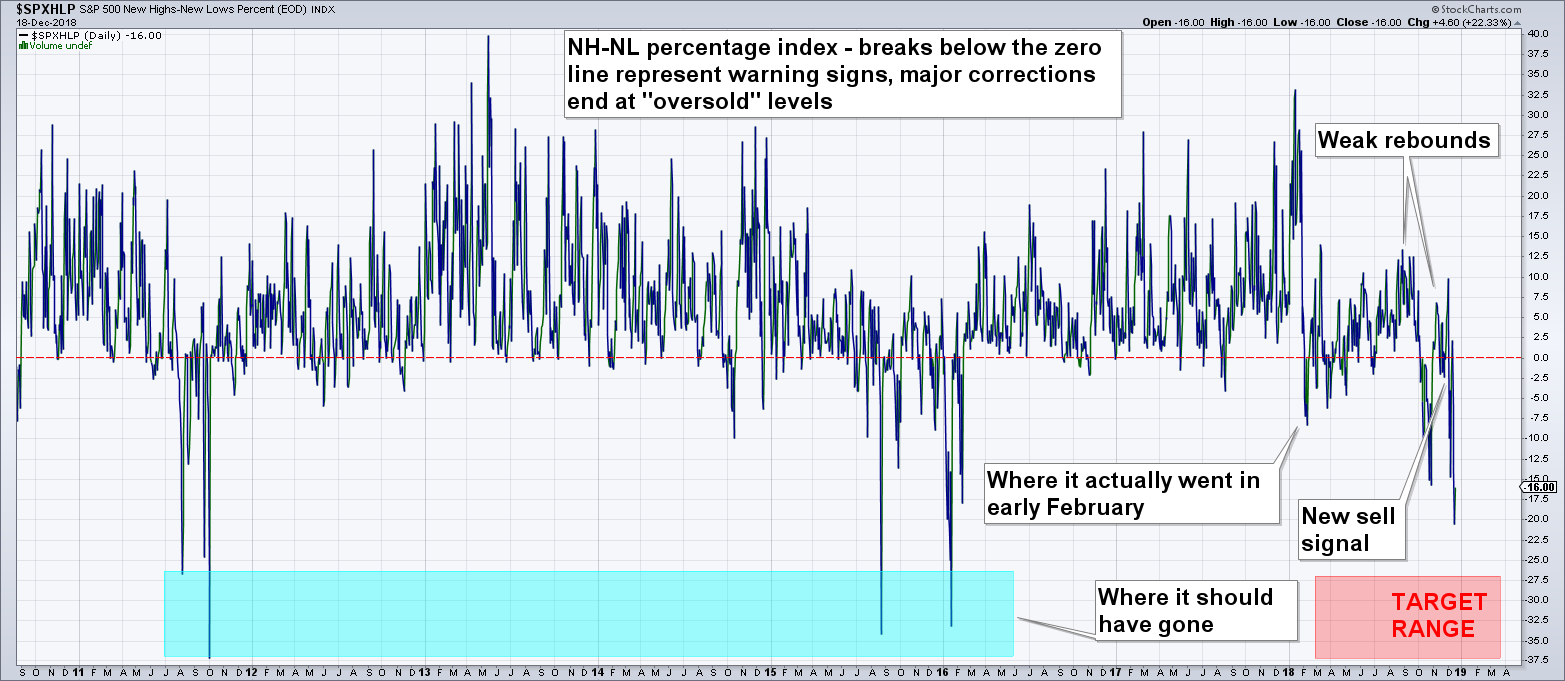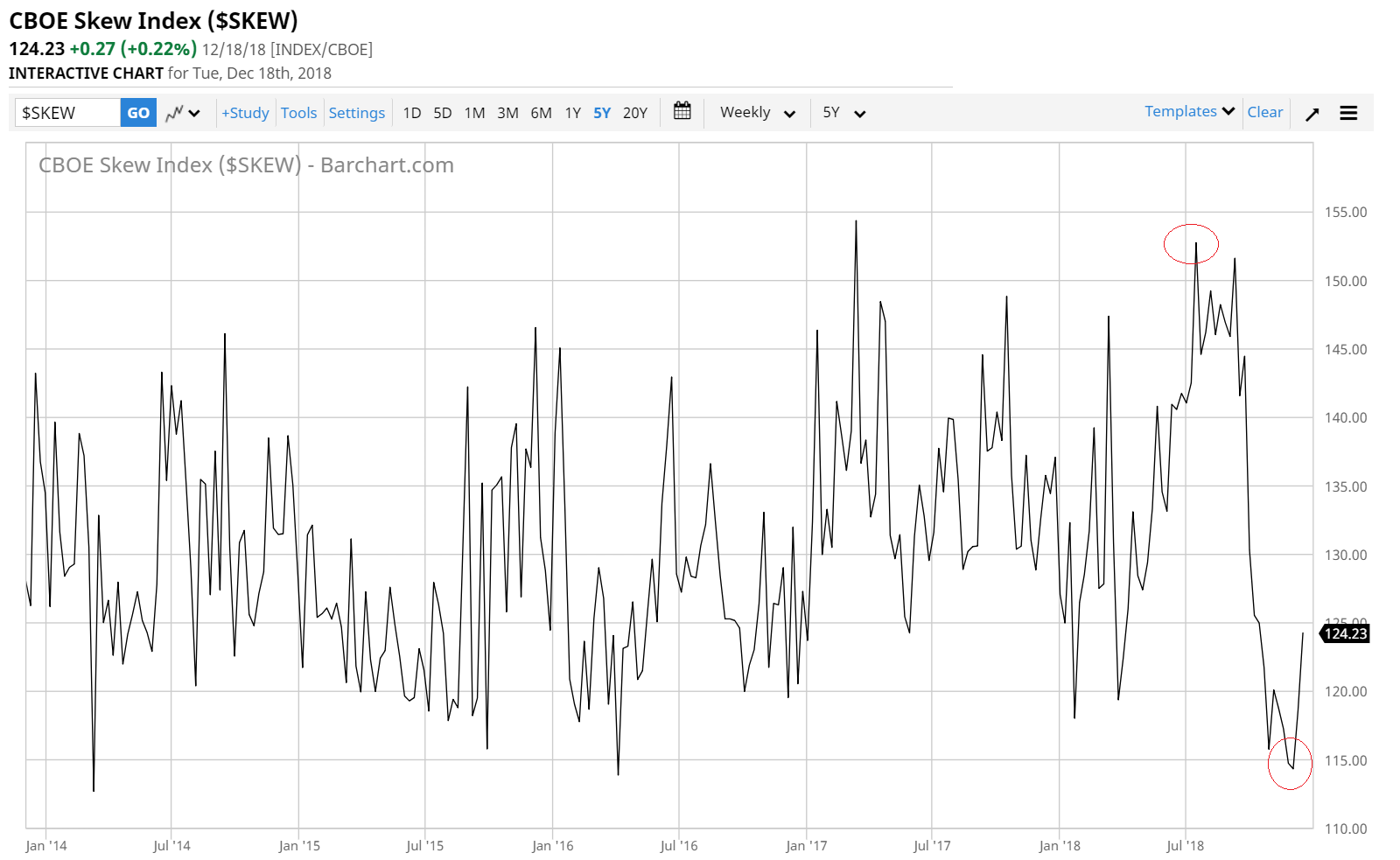The Seasonal Trend Inversion Continues
By now it has been pretty well telegraphed that the Fed will likely announce that it is going to end its “automatic 25 bps rate hike every quarter” policy and replace it with some sort of “incoming data dependent” version. Normally one would expect this to constitute a “buy the news” event, especially in view of the recent sharp decline in the stock market. However, there are still a few problems with this idea – the chart below illustrates one of them.

The eerie, almost perfect inversion of the usual seasonal mid-term election pattern continues unabated – and even though we have pointed this out for quite some time, we are also a bit surprised by how persistent this phenomenon has been.
The market continues to act in an atypical manner – it usually rallies strongly at this time of the year, and particularly so in midterm election years. In fact, so far this is easily one of the weakest December performances in market history.
FOMC Decision: To What Extent Is It Priced In?
There is also the problem that a well-telegraphed FOMC decision may already be priced in, which would make a potential “buy the news” response less energetic than it might otherwise be. Since short interest has recently declined to the lowest level since 2010, bulls cannot really pin their hopes on a short-covering spree either.
In the meantime some people are even calling on the Fed to rescue the stock market by ending the “QT” policy (the Fed’s QE portfolio is currently reduced by around USD 50 billion per month). We doubt that such a sudden policy shift is in the cards, and even if it were, there is no telling how the market would interpret it.
The next chart shows a selection of major benchmark indexes. What is noteworthy about it is that as of now, there are no longer any short term price divergences in play – all five indexes have reached new lows for the move this week.
Since late in the trading day on Monday the market has tried to find its footing (normally the market actually tends to rally ahead of FOMC announcments), but it was not a particularly successful attempt. The two weakest indexes in our selection, namely the NYSE Index (NYA, a very broad market measure) and the Russell 2000 (RUT, small caps index) continued to drift lower.
We have added a potential worst case wave count to the RUT chart. The same wave count can actually be applied to the other indexes as well, but it is harder to see on their daily charts (it is more readily visible on 60 minute charts). Note that we are not really the most experienced Elliott Wave practitioners, so take this with a big grain of salt.
We mainly want readers to keep in mind that a negative outcome cannot be ruled out, even though several technical measures indicate that the market is quite “oversold” by now.

Five US benchmark indexes – Dow Jones Industrial Average, S&P 500, Nasdaq 100, RUT and NYA. Both the broad market as represented by the NYA and the small cap universe represented by the RUT are actually much weaker than the big cap segment represented by the other three indexes. The Russell 2000 was a leader to the upside and has in the meantime turned into a leader to the downside. The price divergences between these indexes have been erased this week, i.e., they are now confirming each other.
One of the technical indicators we like to watch, namely the SPX new high/new low percent index, has finally begun to head down in earnest. However, at this point it still has some room to fall before it signals genuinely oversold conditions.

The SPX NH-NL percent index has finally begun to head down more sharply, but remains well above the “target range” that would indicate extremely oversold conditions.
Sentiment – The First Stirrings of Fear
The sentiment and positioning backdrop has certainly improved in some respects, but we caution that overall, it is actually a bit of a mixed bag. Many prominent sentiment surveys such as e.g. the AAII survey have definitely seen their bull-bear ratios decline close to levels last seen at major correction lows.
We see this as mildly supportive for the market, but context is important in this case. If a bear market has begun, the goal posts will shift – just as they shifted when the bull market got underway in early 2009.

By now the AAII bull-bear ratio is very close to the level seen at the lows of the early 2016 correction.
The next chart is an update of a trio of indicators we last discussed in a previous market update in early November (see “Crumbling Piles of Sand”) – namely the equity put-call ratio, the TRIN and the VIX. We have grouped the TRIN with sentiment indicators because at extremes it reflects an extreme urge on the part of investors to get in or out of stocks in size.

There were finally spikes in the equity put-call ratio and the TRIN consistent with previous short- to medium term lows – but the VIX continues to be the “odd man out”, as demand for SPX puts remains anemic.
As the chart annotations indicate, we have now finally seen a few signs of fear in the form of spikes in the equity P/C ratio and the TRIN (a.k.a. Arms Index – here is an explanation of what it shows). Note that both downward and upward spikes in the TRIN can somtimes turn out to be “kick-off” signals, they do not always result in countertrend reactions.
What is more puzzling is the continued sluggishness in the VIX. Since SKEW is very low as well, we know there is very little demand for tail risk protection (SKEW measures the “options smile”, which depends on the implied volatility premiums embedded in far out of the money SPX options).
This is surprising – when exactly did investors think they would need tail risk protection if not now? SKEW was actually close to a multi-year high in mid August and thereafter headed sharply lower until hitting levels close to multi-year lows in early December. Since then it has turned up again, but not by much (not yet, anyway).

SKEW – from close to multi-year highs in mid August to multi-year lows in early December.
Speculator positioning in E-mini SPX futures (ES) is another oddity – it has still not reversed, with the large speculator net long position at a hefty 174,000 contracts at last count and the small speculator net long position at almost 105,000 contracts. That has to be smarting by now.
NYSE margin debt has in the meantime declined by around $60 billion since its peak in May, which leaves it at a still eye-watering $608 billion. You can probably see why we say that sentiment and positioning data are actually a mixed bag at this stage.
Conclusion
The market is likely close to a short term low by now – at least in time. It is not necessarily close to a low in price, as that really depends on how much more fear is going to creep in over coming days and/or weeks. Keep in mind that regardless of the short term reaction to the FOMC announcement, the monetary backdrop clearly remains hostile for the time being.
We would guess that if a rally were to begin from here, it may well be fast and furious, but it ultimately wouldn’t last long. Moreover, the data indicate to us that there definitely remains panic potential as well. All in all, we would continue to advise caution.
As an aside: a minor short term positive for the market is the fact that cryptocurrencies have recovered over the past three days (recently they have slightly led the short term gyrations in stocks). We would not rely on that correlation though, as it may well turn out to be a fluke.
The recent breakout in credit spreads is probably of greater importance to the stock market. Perhaps the sell-off in corporate bonds is also due a brief pause, but there have been a few worrisome developments in credit-land recently – we will discuss these in a separate post shortly.
